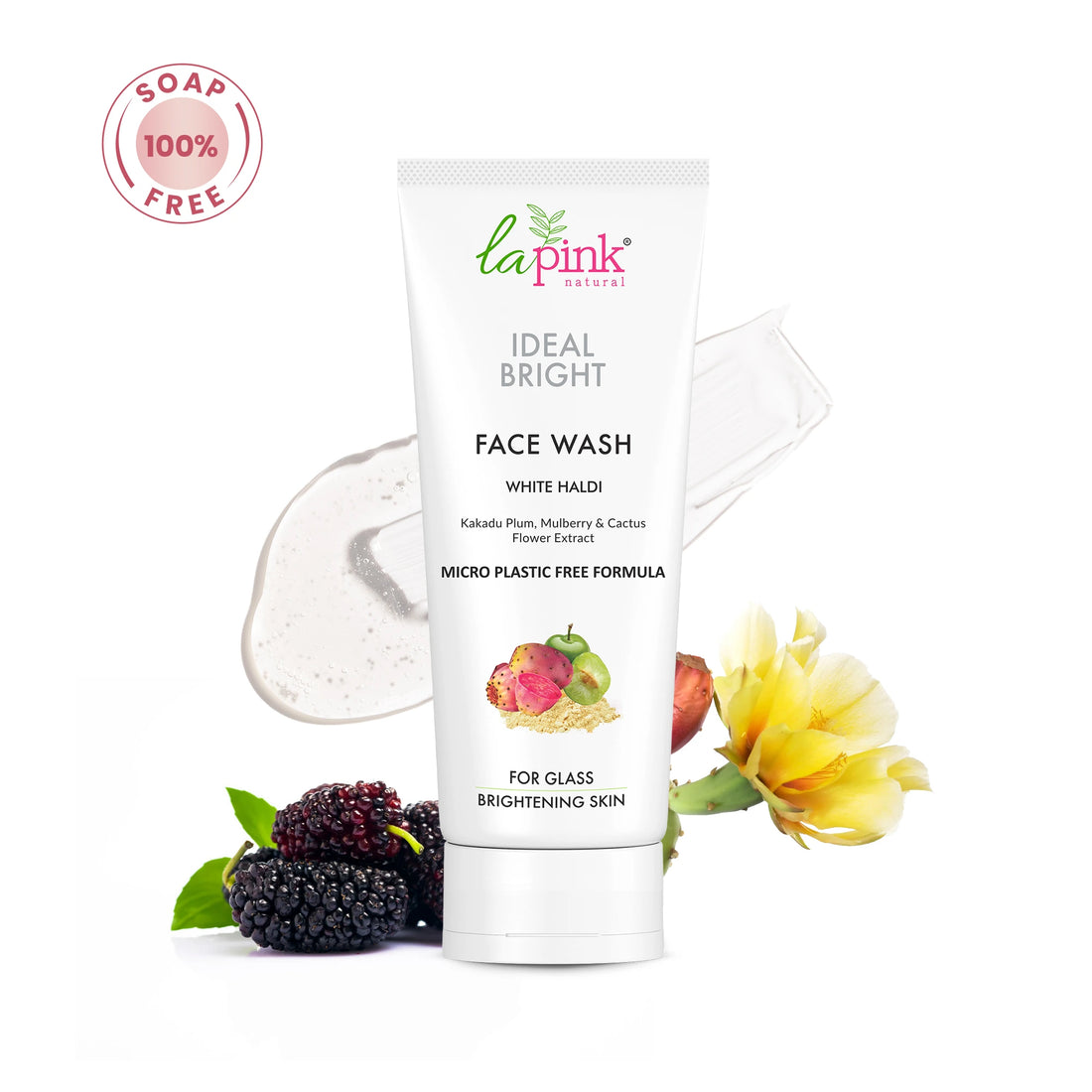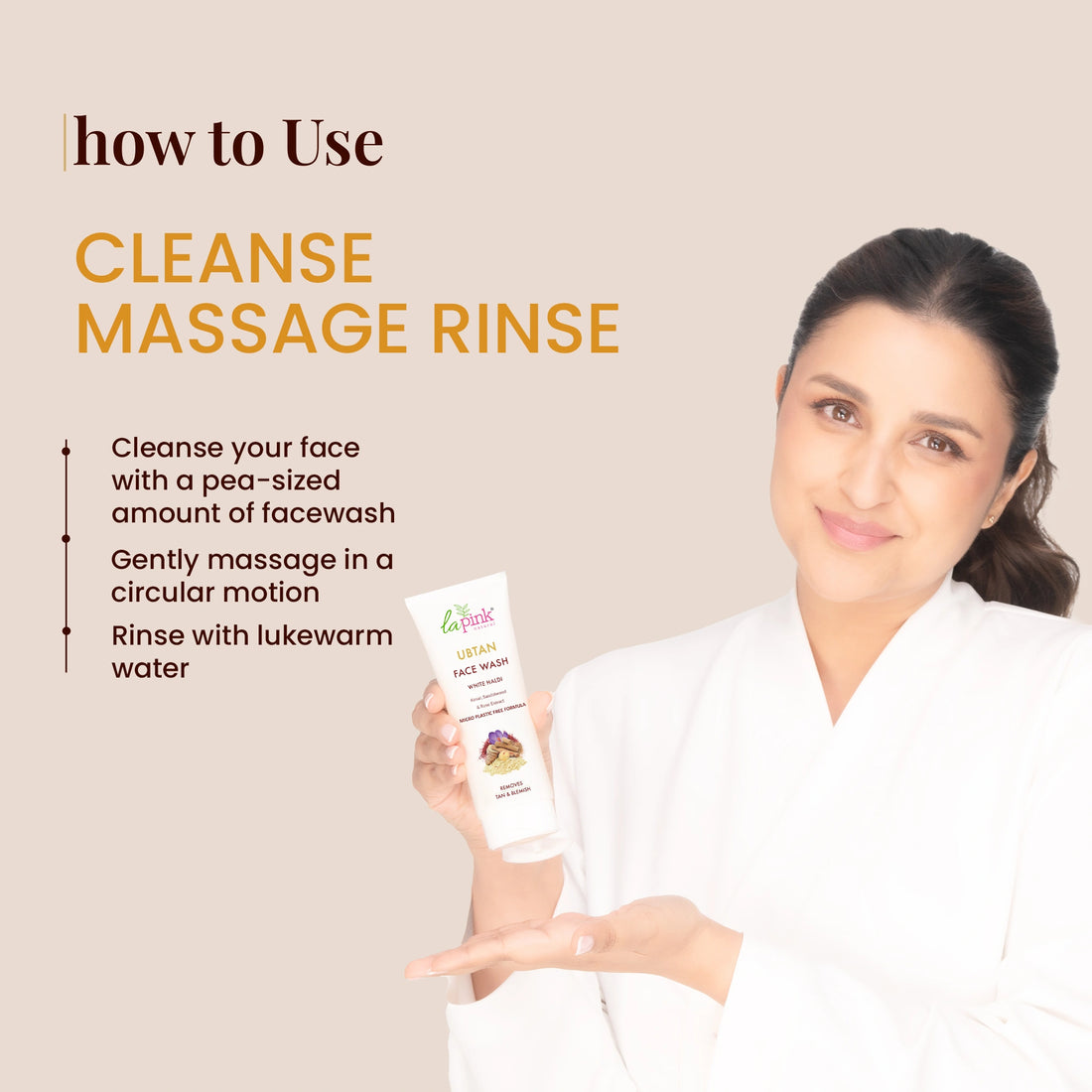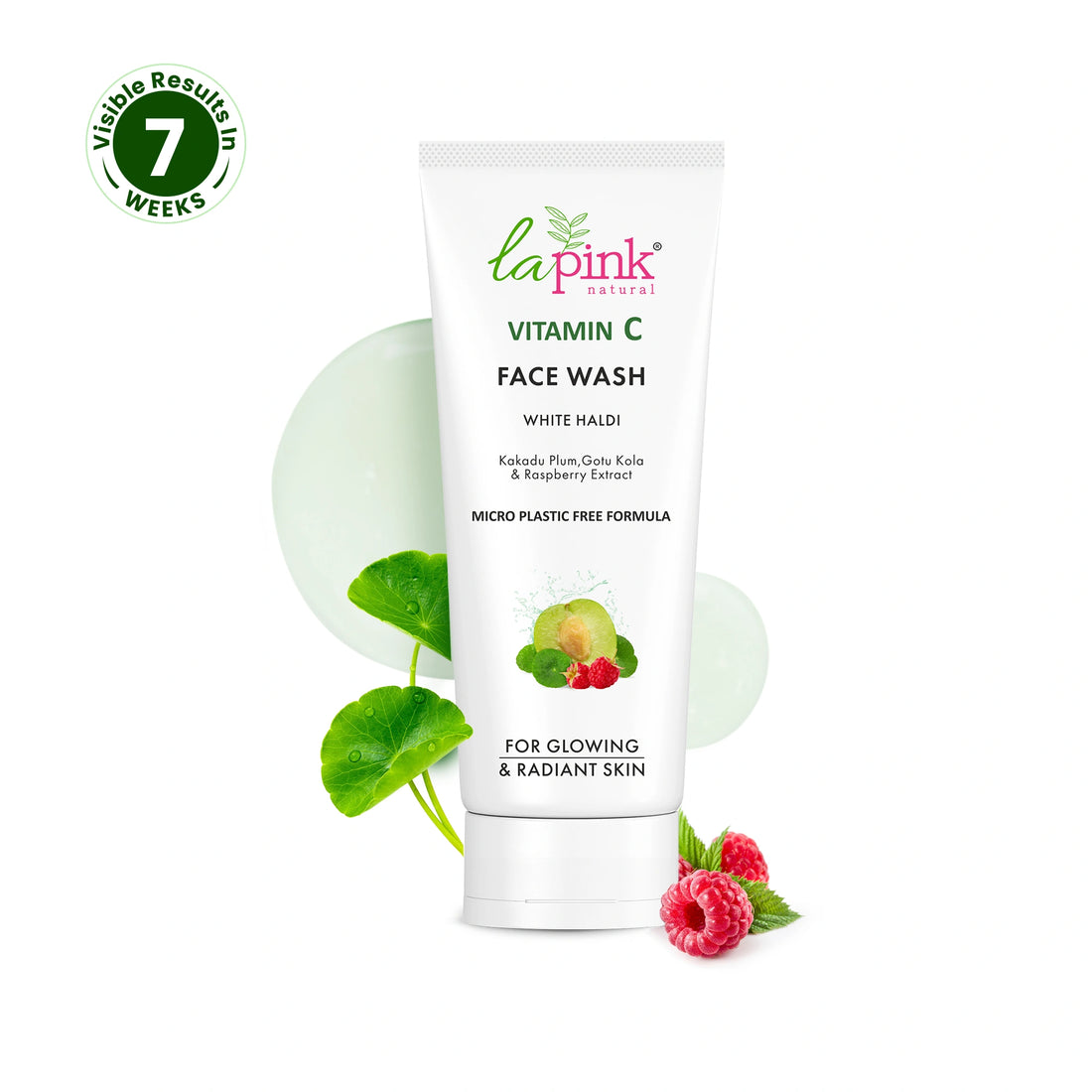
উজ্জ্বল ও সুস্থ ত্বকের জন্য সঠিক ফেস ক্রিম বাছাই করার পদ্ধতি
বিষয়সূচি ভূমিকা প্রথমেই বুঝে নিন নিজের ত্বকের ধরন ত্বকের উজ্জ্বলতা আর রঙের ভারসাম্য আনতে ব্রাইটেনিং ক্রিম La Pink Ideal Bright Day Cream & Night Cream Combo ক্রিম কেনার আগে উপাদান...

Sodium Lauroyl Sulfate (SLS) is a man-made surfactant derived from lauric acid, popularly found in skincare for its great cleansing and foaming capabilities. It dissolves dirt, oil, and impurities effectively, making it a great addition to face washes, body washes, and shampoos. Its rich lather creation improves user experience, and its affordability makes it appealing to formulators. Yet SLS is harsh, typically leading to dryness, irritation, or disruption of the skin barrier, particularly in sensitive or acne-like skin. Consequently, most contemporary formulas opt for milder substitutes such as Sodium Lauroyl Methyl Isethionate or Sodium Lauryl Sulfoacetate.
Sodium Lauroyl Sulfate (SLS) is an anionic surfactant of formula C₁₂H₂₅NaO₄S, produced from lauric acid and sulfuric acid and neutralized with sodium hydroxide. Structurally, it consists of a 12-carbon hydrophobic tail and a hydrophilic sulfate head, counterbalanced by a sodium ion. With its composition, it is able to efficiently break oils and produce foam. SLS is a common ingredient that is used due to its excellent cleansing, emulsifying, and foaming capacity, but it can be irritating to the skin because of its lipophilic ability to remove natural lipids, particularly in sensitive products.




Sodium Lauroyl Sulfate (SLS) is a sulfonated lauric acid that contains a sulfate group, whereas Sodium Lauroyl Sarcosinate is a gentler surfactant produced from the amino acid sarcosine and lauric acid, and is not sulfate-containing.
SLS is commonly utilized for its intense cleansing strength and high foaming capacity, commonly distributed in body wash, shampoos, and soaps, while Sodium Lauroyl Sarcosinate is recognized for its mild cleansing and conditioning properties, suitable for sensitive skin and baby care products.
SLS has a tendency to irritate the skin, particularly upon repeated use, which is likely to cause dryness, redness, or disturbance of the skin barrier; on the other hand, Sodium Lauroyl Sarcosinate has a low irritation potential and is usually safe for sensitive, acne skin, or damaged skin.
While SLS creates a lot of lather and has a squeaky-clean after-feel that can cause stripping of natural oils, Sodium Lauroyl Sarcosinate forms a gentle, rich foam that cleans without drying out, with the skin feeling well-balanced and comfortable.
Because sulfates and sensitivity in the skin are increasingly becoming a concern, most contemporary, dermatologically-tested, or natural cosmetic products currently prefer using Sodium Lauroyl Sarcosinate instead of SLS since it is effective in cleansing with superior tolerance and biodegradability in the skin.
1. Facial Cleansers (1% – 10%)
In cleansers and face washes, SLS is commonly found at lower concentrations (1% to 10%) so that there is effective cleaning but not excessive irritation. It effectively cleanses oils and dirt but does not excessively strip sensitive facial skin.
2. Shampoos (5% – 15%)
Shampoos usually have SLS at higher concentrations, usually between 5% and 15%, to provide intense foaming and oil-removal capabilities. At this concentration, SLS effectively cleanses the scalp and hair, particularly oily hair.
3. Body Washes and Soaps (5% – 20%)
Body washes utilize SLS percentages from 5% to 20%. Increasing percentages enhance lathering and cleansing capability to effectively strip sweat, grime, and oils from greater areas of skin.
4. Hand Soaps and Bubble Baths (5% – 15%)
These topical personal care products contain SLS in intermediate levels to produce high-quality foam and satisfactory cleansing while making skin refreshed but not excessively dry.
What Makes Sodium Lauroyl Sulfate So Popular with Beauty Formulators?
Strong Cleansing Power
SLS is good at stripping away oils, grime, and filth, thus ideal for use in deep cleansing products such as shampoos, body washes, and facial cleansers.
Good Foaming Properties
It creates a rich, voluminous foam that contributes to sensory delight and spreads the product thinly and evenly over the skin or hair.
Cost-Effective Ingredient
SLS is cost-effective and readily available, enabling formulators to develop cost-effective skincare products with no sacrifice in cleansing effectiveness.
Versatile Formulation Compatibility
It is chemically stable and has good compatibility with broad ranges of ingredients and pH levels, so it can be easily formulated into an array of skincare and haircare products.
Fast Rinse-Off and Low Residue
SLS is quick to rinse off and leaves very little residue on hair or skin, which adds to a feeling of freshness and cleanliness after use.
1. Effective and Deep Cleansing
SLS is also famous for its strong capacity to strip away dirt, oil, makeup, and impurities from the skin. Its molecular arrangement makes it capable of penetrating oily layers and washing away debris effectively. It is thus suitable for oily or acne skin types and for formulations designed to provide a "squeaky clean" feel.
2. High Foaming Action Improves User Experience
One of the most valued advantages of SLS is that it creates thick, rich lather. Not only does this distribute the product evenly, but it also provides consumers with a sensory feel of cleanliness. High-foam performance particularly makes it very popular in face cleansers, body washes, and shaving creams.
3. Outstanding Emulsification and Rinse-Off Ability
SLS is a good emulsifier, i.e., it mixes oil-based impurities with water so they can be washed away. It creates very little residue on the skin, giving it a cleaner feel. This ease of rinsing makes it useful in fast-use skincare products such as face wash and hand cleaners.
4. Low-Cost and Easily Available Ingredients
SLS is affordable and readily available, so it is a cost-effective option for formulators. It enables manufacturers to produce effective products at a reasonable price point, which is advantageous to consumers seeking affordable skincare without sacrificing cleansing effectiveness.
5. Stable and Compatible in a Wide Range of Formulas
SLS is stable to chemicals and functions effectively in a broad range of pH values, which makes formulating various skincare products simple. It also combines well with other ingredients, resists degradation over a period of time, and will not degrade quickly, which guarantees uniform performance in creams, cleansers, and gels.
1. Skin Irritation and Sensitivity
SLS can dry out the skin's natural oils and break its protective barrier, causing dryness, irritation, redness, itching, and irritation, particularly for sensitive or compromised skin types. Long-term use can aggravate skin diseases like eczema or rosacea.
2. Interferes with Skin's Natural Moisture Balance
By stripping away oils and lipids aggressively, SLS has the potential to damage the skin's ability to hold moisture. A common outcome is tightness, flakiness, and vulnerability to environmental stress, and therefore, should be avoided by dry or mature skin.
3. Inability to Cause Eye and Scalp Irritation
SLS has been shown to irritate sensitive tissues like the scalp and eyes. In facial washes and shampoos, it has been known to sting, redden, or dry out if it touches sensitive tissues.
4. Can Worsen Acne and Inflammation
Excessive use of SLS can cause inflammation through irritation of the skin and breaking down its barrier function, potentially exacerbating acne-prone skin through enhanced redness and acne formation, instead of soothing or enhancing skin health.
5. Environmental Issues and Biodegradability
Although moderately biodegradable, SLS can accumulate in water systems in significant amounts, possibly disrupting aquatic life. Growing consumer demand for eco-friendly products is leading brands to more sustainable options.
Sodium Lauroyl Sulfate (SLS) is not only a cleanser. It is also a penetration enhancer in skincare products. That is, it can briefly raise skin permeability, facilitating other active ingredients to penetrate more efficiently. While this improves product performance, it also accounts for why SLS can irritate sensitive skin because it opens up the skin to let more of the substances penetrate deeper. This dual function makes SLS a strong ingredient and one that must be carefully formulated to weigh efficacy against safety.
Sodium Lauroyl Sulfate (SLS) is a surfactant commonly used in skincare and personal care products like cleansers, body washes, and shampoos. It helps create lather and removes dirt, oil, and impurities effectively.
While SLS is effective in cleansing, it may cause irritation or dryness in people with sensitive or compromised skin barriers. Those with sensitive skin should look for milder alternatives or SLS-free products.
Though often confused, Sodium Lauroyl Sulfate is considered to be a milder, more skin-friendly version compared to Sodium Lauryl Sulfate. The difference lies in their molecular structure and irritation potential.
Formulators favor SLS for its excellent foaming and cleansing abilities, cost-effectiveness, and ease of formulation in a wide range of personal care products.
Yes, alternatives like Sodium Cocoyl Isethionate, Decyl Glucoside, and Sodium Lauroyl Methyl Isethionate offer gentler cleansing and are ideal for sensitive or dry skin types seeking sulfate-free options.

বিষয়সূচি ভূমিকা প্রথমেই বুঝে নিন নিজের ত্বকের ধরন ত্বকের উজ্জ্বলতা আর রঙের ভারসাম্য আনতে ব্রাইটেনিং ক্রিম La Pink Ideal Bright Day Cream & Night Cream Combo ক্রিম কেনার আগে উপাদান...

বিষয়সূচি ভূমিকা স্ট্রবেরি নির্যাস…ঠোঁটের জন্য পুষ্টিকর Moisturizing lip balm White Haldi ঠোঁটের উজ্জ্বলতা ফেরায় Flavored lip balm উপসংহার FAQs ভূমিকা ঠোঁটের যত্ন এখন আর শুধু সাজগোজের অংশ নয়, বরং প্রতিদিনের...

अनुक्रमणिका: उबटन फेस वॉश: क्यों यह भारतीय सौंदर्य का सदियों पुराना रहस्य है? उबटन फेस वॉश का महत्व और लाभ व्हाइट हल्दी फेस वॉश: क्या यह सामान्य हल्दी से ज़्यादा...




























































We use cookies and similar technologies to provide the best experience on our website. Privacy Policy



